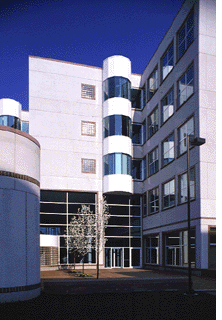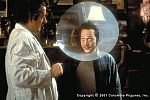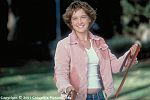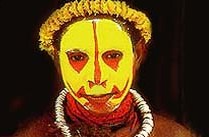 Edisi 3
Juni 2001 Edisi 3
Juni 2001 |
Dari Redaksi |
Rekan-rekan Alumni,
Semoga anda semua dapat menikmati libur
panjang akhir minggu ini. Redaksi menampilkan situs mengenai negara
tetangga kita, Papua New Guinea, yang cukup menarik. Juga situs
mengenai Cornell University, sebagai pembanding terhadap kampus yang
berada di Indonesia.

|
|
KESEHATAN |
Cholera
What
is cholera? Cholera
is a bacterial disease that affects the intestinal tract. It is
caused by a germ called Vibno cholera. Although only a few cases are
recognized in the United States each year, epidemic levels of
cholera have recently been reported in parts of Central and South
America
Who gets cholera? While
cholera is a rare disease, those who may be at risk include people
traveling to foreign countries where outbreaks are occurring and
people who consume raw or undercooked seafood from warm coastal
waters subject to sewage contamination. In both instances, the risk
is quite small
How is the germ spread?
The cholera germ is passed in the stools. It is spread by eating or
drinking food or water contaminated by the fecal waste of an
infected person. This occurs more often in underdeveloped countries
lacking adequate water supplies and proper sewage disposal
What are the symptoms of
cholera? People exposed to cholera may experience mild to
severe diarrhea, vomiting and dehydration. Fever is usually absent
How
soon do symptoms appear? The symptoms may appear from six
hours to five days after exposure
What is the treatment for
cholera? Because
of the rapid dehydration that may result from severe diarrhea,
replacement of fluids by mouth or by the intravenous route is
critical. Antibiotics, such as tetracycline, are also used to
shorten the duration of diarrhea and shedding of the germs in the
feces
Is
there a vaccine for cholera? A
vaccine is available and is sometimes recommended for travelers to
certain foreign countries where cholera is occurring. However, the
vaccine offers only partial protection (50%) for a short duration
(two to six months). Some physicians feel that foreign travelers
almost never contract cholera and that use of the current vaccine
cannot be justified |
|

|
Cornell University's
Ithaca campus, set amid waterfalls, gorges, lakes, and rolling hills
in the Finger Lakes region of central New York State, provides some
of the most breathtaking scenery you'll find anywhere, and the
university's rich history and diverse traditions also make exploring
the campus exciting

Arts Quad The
rectangle of buildings that house the colleges of Arts and Sciences
and Architecture, Art, and Planning was fondly nicknamed the Arts
Quad by Cornellians generations ago. At one time, it was the center
of activity for the young university, and all of Cornell's colleges
and programs were situated among its elms and oaks. Today, the Arts
Quad remains a busy place, especially between classes and on sunny
fall days, and is the home of many of the university's oldest
buildings.

The Biotechnology
Building houses the Center for Advanced Technology (CAT)
in Biotechnology, where faculty members from genetics, veterinary
medicine, chemistry, biological engineering, and a dozen other
fields conduct research on a variety of life science-related
projects. Hundreds of Cornell undergraduate students work in
laboratories for academic credit, and are actively engaged in
cutting-edge researc
 klik untuk info lengkap klik untuk info lengkap |
|
|
FILM |
|
The Animal
Columbia Pictures
Release Date: June 1, 2001
MPAA rating: 'PG-13' for some crude & sexual humor
Running Time: 83 minutes

HE WASN'T MUCH OF A MAN... NOW
HE'S NOT MUCH OF AN ANIMAL.
Trust your
instincts... even if they're not human.
Marvin Mange (Rob Schneider, Deuce Bigalow: Male Gigolo) will soon
have the strength of a mountain lion, the agility of a chimpanzee
and the affections of... a goat? His life is going to be a zoo
thanks to a weird experiment that invites him to take a walk on the
wild side.
A police evidence file clerk, Marvin dreams of becoming a
full-fledged cop like his dad - all he has to do is pass the
physical endurance test.


One night, while Marvin is left alone at the precinct, he answers a
911 call. There's a robbery in progress, and with no one to assist,
a bungling Marvin races to the scene. The bad guys get away, and
Marvin ends up in a near-fatal car crash. As he is pulled from the
wreckage by a shadowy figure, he has no idea that he is about to
become the guinea pig for a bizarre procedure. His rescuer, the
eccentric Dr. Wilder (Michael Caton, The Castle), has cracked the
genetic code. In his private barnyard lab, he repairs Marvin's body
with a strange fusion of animal organs, including those from a
performing sea lion and a talented dog, to name a few.


When he returns to his job at the station, Marvin has no memory of
Wilder's procedure. He credits a new health drink with his bulging
muscles and keen sense of smell. On the outside, Marvin looks
normal, but inside, he never knows which beastly behavior will
emerge as he swings through the urban jungle.
After he sniffs out a drug smuggler at the airport, Marvin is a
hero. He is instantly made a full-fledged officer by the ever
trusting Chief Wilson (Edward Asner, The Bachelor) and left under
the watchful eye of his increasingly suspicious boss, Sgt. Doug Sisk
(John C. McGinley, Any Given Sunday).
Life gets more complicated when he meets and falls for Rianna
(Colleen Haskell, Survivor), a former tree hugger who now volunteers
at a local animal shelter. When Marvin's mountain lion vibes kick
in, all hell breaks loose, not only at the shelter but at the local
butcher shop. As the animals within him start to take over, Marvin's
world gets more unpredictable by the minute
The Main Cast
Marvin Mange .... ROB
SCHNEIDER
Rianna ........... COLLEEN
HASKELL
Doug Sisk ...... JOHN
C. McGINLEY
Chielf Wilson.... EDWARD
ASNER
Miles ........................ GUY
TORRY
Fatty. .............. LOUIS
LOMBARDI
Dr. Wilde r......... MICHAEL
CATON
Directed by. ... LUKE
GREENFIELD
|
 |
|
Arsip Cyber Clips
|
|
|
PAPUA
NEW GUINEA |

Papua
New Guinea occupies the eastern half of the rugged tropical
island of New Guinea(which it shares with the Indonesian territory
of Irian Jaya) as well as numerous smaller islands and atolls in the
Pacific. The central part of the island rises into a wide ridge of
mountains known as the Highlands, a territory that is so densely
forested and topographically forbidding that the island's local
peoples remained isolated from each other for millennia. The
coastline is liberally endowed with spectacular coral reefs, giving
the country an international reputation for scuba diving. The
smaller island groups of Papua New Guinea include the Bismarck
Archipelago, New Britain, New Ireland and the North Solomons. Some
of these islands are volcanic, with dramatic mountain ranges, and
all are relatively undeveloped.

The first inhabitants of
Papua New Guinea, probably migrants from the Indonesian archipelago,
arrived about 50,000 years ago. These migrants arrived in several
waves, and the land that they encountered had a remarkable effect on
cultural development. Because New Guinea's terrain is marked by
imposing mountains and extremely rugged territory, different
population groups developed in virtual isolation. Each group
developed its own language and its own tribal culture, a development
that gives Papua New Guinea one of the world's most diverse and
fascinating cultural landscapes
 
 klik untuk info lengkap klik untuk info lengkap |
|
FASHION |
|
CAROLYN
MURPHY
 
 
JAN
DUNNING
  |
|
ARKEOLOGI |
MEGALITHIC MISTERY
 
 
 
Nearly the only artifacts
bequeathed to the present by the builders of Stonehenge and the
thousands of other megalithic monuments dotting the British
countryside were stones. The culture that built these profound
testaments to perseverance had no written language, left no
pictorial records, did not pass down oral histories through the
generations. Lost in the mists of prehistory are most of the clues
that might have explained what beliefs or practical concerns drove
these people to stand 80-ton boulders on end and painstakingly
arrange them into circles with little more than ropes and their bare
hand
Theories purporting to explain the function of Britain's prehistoric
stone circles abound, despite the dearth of real evidence. Some
studies claim that they serve as maps of the Zodiac. Others argue
that they form complex solar or lunar calendars and were the centers
of ritual ceremonies on solstice days or during eclipses. One of the
most popularly held misconceptions about the circles perpetrated by
18th-century scholars is that they were built by the Druids, the
nature-worshiping priestly class of the Celtic people. Revered by
New Agers today, the Celts did not inhabit Britain until 800 BCE,
more than 1000 years after most of the monuments came to be |
|
klik untuk info lengkap
![]()
![]()